
This study presents a performance evaluation method of gas-fired heating and hot water combi-boilers. Seven factors related to the operation performance are selected. Twenty combi-boilers of different brands and heat input are selected randomly and tested according to GB25034-2010. The factor analysis and cluster analysis method are selected to evaluate the performance of combi-boilers. Analysis results show that, the evaluation model F = 0.652F1 + 0.190F2 + 0.158F3 is achieved, and the combi-boilers can be ranked with the evaluation model. The gas-fired combi-boilers selected can be copolymerized into 3 classes. The thermal efficiency at rated input in heating mode, thermal efficiency at 50% of the nominal input in hot water mode, concentration of O2 and CO2 of dry combustion products have the greatest impact on the operation performance of combi-boilers. This study provides a method for quantitative evaluation of the operation performance of combi-boilers and a clear direction for product optimization.

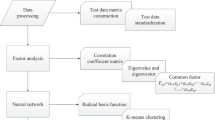
Avoid common mistakes on your manuscript.
The haze pollution in winter in northern China has become more and more serious since 2013, and studies found that coal combustion has a great impact on haze. Haze is mainly composed of sulfur dioxide, nitrogen oxides and inhalable particles. In order to reduce the haze pollution, China has proposed the “coal-to-gas project” to convert coal-fired to gas-fired. The core of the coal-to-gas project is the change of heating mode, the coal-fired boiler is replaced with gas-fired boiler in the urban centralized heating zone and the domestic gas-fired combi-boiler is used instead of the bulk coal in the rural areas. With the advancement of coal-to-gas project, the sales of gas-fired combi-boilers have reached 2.1 million, 5.5 million and 3.2 million in 2016–2018. Therefore, for such a large number of combi-boilers, it is necessary to quantitatively evaluate the performance of combi-boilers comprehensively.
However, the research of gas-fired boilers is mostly focused on the industrial boilers with high heat input and the boilers are used only for heating, while the research of gas-fired heating and domestic hot water boilers below 40 kW is relatively few. As a kind of gas-fired boiler, the difference between gas-fired heating and hot water combi-boilers and industrial gas-fired boiler is that, the heat input of gas-fired combi-boilers is generally below 40 kW, and mainly for domestic use, while the industrial gas-fired boilers are generally used for industrial or urban central heating. Both of them are consistent in the principle of gas combustion, so the research of combi-boilers can be learned from the research of industrial gas-fired boiler.
In the latest research on the performance evaluation of boiler, the operation performance mainly focuses on the evaluation of thermal efficiency, for example, a performance evaluation model was established based on energy-efficiency mechanism modeling [1], and performance evaluation model was established based on heat loss method [2]. Failure analysis was carried out on a prematurely failed tertiary super heater tube used in gas-fired boiler [3]. For the operational performance boilers, the performance of a very common commercial premixed boiler setup with cylindrical premixed burners has been studied, the aim is to generate knowledge on applied premixed combustion and find the contribution of metal fiber combustion action [4]. With the investigation of denitration efficiency of transition metal oxide oxygen carriers for the gas-fired boiler flue gas, the results showed that with the reduced oxygen carriers, NO can be reduced to N2 with direct reaction and the carriers can also be converted to the oxidized oxygen carriers at the same time [5]. The study of heat transfer efficiency, emission concentrations of CO and NOx of a heat exchanger by an efficiency bench test of the gas-fired boiler has been carried out, and results showed that the excess air coefficient has a significant effect on the heat efficiency, CO and NOx emission concentrations of the water heater [6]. The development of visualisation and measurement of multi-burner flame in an instrumentation system is introduced, and the size, temperature and oscillation frequency of flame were quantitatively determined with the flame images obtained [7]. An improved methodology to compare a traditional natural gas combined cycle plant with a distributed energy resource combined heat and power system has been put forward [8]. With a given exhaust gas temperature, the operation regulation of coupled high–low energy flue gas waste heat recovery system was carried out to maintain the exhaust gas temperature under different flue gas flow, flue gas temperature and air temperature conditions [9].
By choosing several relevant influencing factors, an evaluation model can be established to evaluate the performance of boilers comprehensively. Principal component analysis, as a basic mathematical analysis method, is widely used in practice. In terms of energy, the analysis method is widely used in building energy. Principal component analysis was used for plugging detection and identification for final super heater tube banks with tube temperature data, which show that the method can detect and identify plugged tubes successfully, and categorical principal components analysis has been used to examine the views of people involved in ground source heat pump sector [10, 11]. Based on principal component analysis, the model built for automatic online fault detection, diagnose and sensor reconstitution scheme, that captures the correlation among the flow meters and temperature sensors installed in the chilling systems has been presented [12]. The principal component analysis is used to select the significant modeling inputs and simplify the artificial neural network model for hourly prediction of building electricity consumption, the proposed prediction model obtained can be used for building electricity consumption online prediction [13]. Three regression variables including synthetic data sequences, outdoor specific humidity and solar radiation were selected for regression analysis, and the principal component analysis seemed to perform better than multiple regression analysis [14]. In addition, the principal component analysis method is also used in botany, medicine, ocean, groundwater and other aspects of evaluation and analysis, for example, evaluation of catalytic pyrolysis of cassava rhizome, evaluation of the partial organ tolerance of normal tissues to radiation and evaluation of ground water quality have all been analyzed by principal component analysis [15,16,17,18].
At present, the evaluation of the gas-fired combi-boilers is only based on China national product standards “GB 25034-2010” to determine whether it is qualified, and cannot comprehensively and quantitatively determine the performance of the combi-boilers or give the ranking of combi-boilers. In the previous studies, factor analysis and cluster analysis are rarely used to evaluate the operation performance of boilers. Therefore, combined with the above analysis, the performance of gas-fired heating and hot water combi-boilers can be evaluated and analyzed by factor analysis and cluster analysis, which can be provided as a method for quantitative evaluation of boilers.
The main performance of the combi-boilers includes economic performance and safety performance, among which the economic performance is mainly reflected in the level of useful efficiency, while the safety performance is mainly reflected in the concentration of dry combustion products. Compared with the combustion characteristics of gas-fired combi-boilers, seven indicators including useful efficiency at rated input in heating mode, exhaust temperature, concentration of O2, CO, CO2 of the dry combustion products, useful efficiency at 50% of the nominal input in hot water mode and weighted value of the NOx concentration have been selected for performance evaluation.
The purpose of this study presented here is to provide a quantitative evaluation method for the operation performance of the combi-boilers. For performing this aim, few combi-boilers have been tested, and the evaluation model are developed with factor analysis method. Then, the key factors affecting the evaluation of operation performance are determined with cluster analysis method.
Taking 20 gas-fired heating and hot water combi-boilers as an example, the operation performance is evaluated by principal component analysis.
The selected samples have a rated heat input distribution of 20–40 kW and closed heating system structure. The burners are atmospheric burners, and the structure and head of burner are grate structure and harmonica structure, which made of stainless steel. The heat exchanger is made of finned copper coil. The fan type includes fixed frequency and variable frequency fan. The heat exchange methods include plate heat exchanger heat transfer and casing heat transfer. The gas type used during the test is natural gas (12 T).
Figures 1 and 2 are the system schematic and interior structure of the gas-fired heating and hot water combi-boiler,
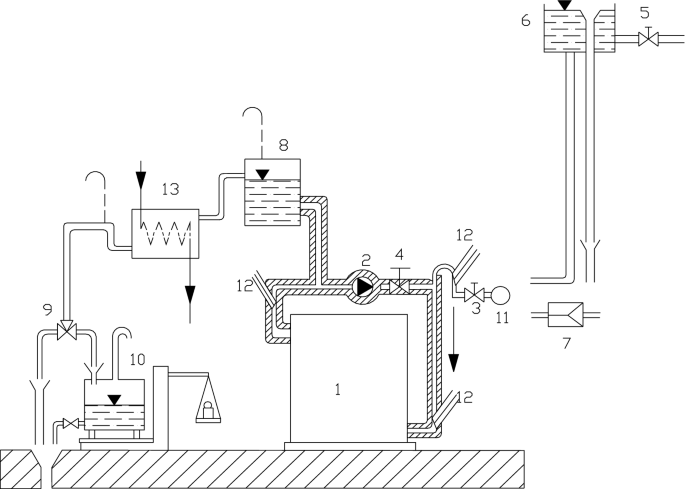
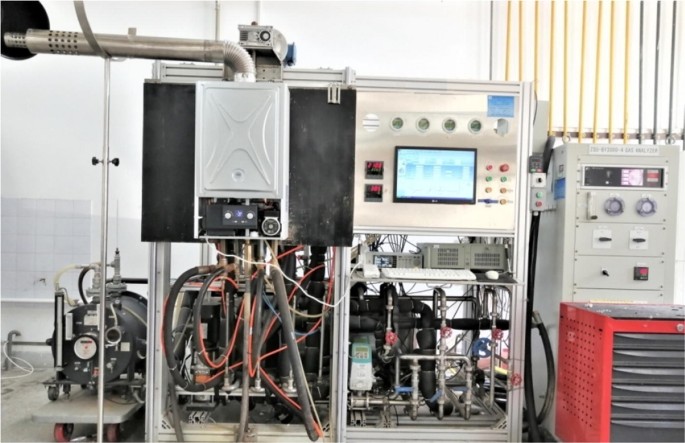
The boiler is installed on the insulated test rig (see Fig. 2), and the measurement of the efficiency may begin once the boiler, with the control thermostat put out of action, is at thermal equilibrium and the return and flow temperatures are constant. The hot water is passed into a vessel placed on scales (suitably tared before the test) and at the same time measurement of the gas rate (reading the meter) is started. Reading of the water return and flow temperatures are taken periodically so as to obtain a sufficiency accurate average.
Mass m1 of water is collected during the 10 min of the test. A further 10 min wait is required in order to evaluate the evaporation corresponding to the test period. Mass m2 is obtained. m1 − m2 = m3, the quantity of which note has to be taken in order to increase mt by the value corresponding to the evaporation, whence the corrected water mass m = m1 + m3.The quantity of heat transferred by the boiler to the water collected in the vessel is proportional to the corrected mass m and to the difference between temperature T1 at the cold water inlet and T2 at the boiler outlet. The useful thermal efficiency is determined by means of the following formula:
where ηu is the useful efficiency in percent, m is the corrected quantity of water expressed in kg, 4.186 is the specific heat of water in kJ/(kg °C), T1 is the temperature at the cold water inlet at 60 ± 1 in °C, T2 is the temperature at the boiler outlet at 80 ± 1 in °C, Vr(10) is the fuel gas flow consumption in m 3 measured during the test corrected to 15 °C, 101,325 mbar, Hi is the net calorific value of the gas used, in MJ/m 3 at 15 °C, 101,325 mbar, dry gas, Dp is the heat loss from the test rig corresponding to the mean water flow temperature, expressed in kJ, taking into account the heat loss from the circulation pump, by calculating the heat loss of the experimental device, the heat loss is generally 0.5 kW.
The sample of the combustion products is taken in the plane perpendicular to the direction of flow of the combustion products, and a distance from the extreme end of the combustion products duct is equal to the internal diameter of the combustion products evacuation duct, the distance is generally 60 mm. The other end of the sampling probe is connected to the ZSU-BY3000-4 flue gas analyzer.
The inlet water temperature is kept constant at 20 ± 1 °C, the outlet temperature of hot water is adjusted to be 20 K higher than the inlet water temperature, and the useful efficiency test is started when the thermal equilibrium state is reached and the outlet temperature remains constant.
$$ \eta_where ηs is the useful efficiency in percent, 4.186 is the specific heat of water in kJ/(kg·°C), \(m^<\prime>\) is the quantity of domestic hot water produced expressed in kg, \(T_^<\prime >\) is the inlet domestic hot water temperature at 20 ± 1 in °C, \(T_^<\prime >\) is the outlet domestic hot water temperature at 40 ± 1 in °C.
The test method of weighted value of NOx concentration is in accordance with the China national standard GB 25034-2010 “Gas-fired heating and hot water combi-boilers”.
The return water temperature Tr is calculated as a function of the particular heat input using the following formula:
where Tr is the return water temperature expressed in °C, Q is the partial heat input expressed in percent of nominal heat input.
The NOx value is specified below:
$$ (>_ )_ = (>_ )_ + \frac<<0.02(>_ )_ - 0.34>> <<1 - 0.02(h_- 10)>> \times (h_ - 10) + 0.85 \times (20 - T_ ) $$where (NOx)m is the concentration of NOx in the dry flue gas at hm and Tm in mg/kWh, hm is humidity of the air in g/kg; Tm is wt bulb temperature of air in °C; (NOx)0 is the corrected value of NOx expressed in mg/kWh.The weighted value of the NOx concentration is calculated as follows:
where (NOx)pond is the weighted value of the NOx concentration in milligram per kilowatt-hour (mg/kWh), (NOx)m(70), (NOx)m(60), (NOx)m(40) are the measured value at the partial heat input.
The useful efficiency at rated input in heating mode, the exhaust temperature, the concentration of O2, CO, CO2 of the dry combustion products, the useful efficiency at 50% of the nominal input in hot water mode and the weighted value of the NOx concentration of the 20 gas-fired heating and hot water combi-boilers have been tested respectively. 20 samples of different production enterprises and different heat input are selected randomly. The test results of 20 samples are shown in Table 1.
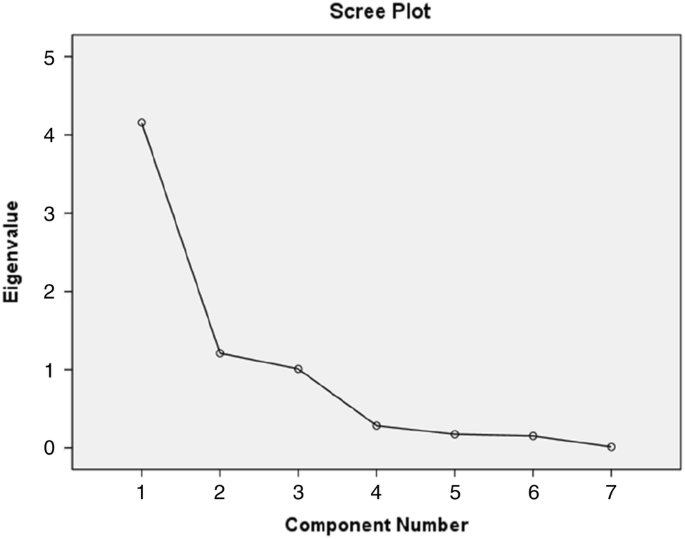
It can be seen from Tables 3 and 4 that the indicators of useful efficiency at rated input in heating mode, concentration of O2 and CO2 have a greater loading on the first principal component, and the corresponding loadings are 0.902, 0.958 and 0.952, respectively, and the contribution of the first principal component to the comprehensive evaluation index is reached 59.425%. The indicator of weighted value of NOx concentration has the largest loading on the second principal component, the corresponding loading is 0.885 and the contribution is 17.279%. The indicator of concentration of CO has the largest loading on the third principal component, the corresponding loading is 0.806 and the contribution is 14.414%. Combined with the cumulative and the loading corresponding to the principal component, it can be seen that useful efficiency at rated input in heating mode and concentration of O2 and CO2 has a greater impact on performance evaluation.
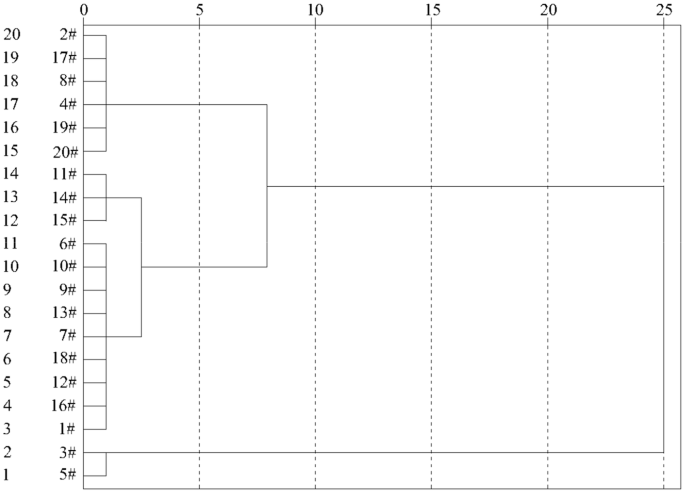
Combined with Tables 8 and 9, it can be seen that the combi-boilers with higher operation performance have the higher thermal efficiency at rated input in heating mode and thermal efficiency at 50% of the nominal input in hot water mode and concentration of CO2 of dry combustion products, and lower concentration of O2 of dry combustion products, while the exhaust gas temperature, concentration of CO of dry combustion products and weighted value of NOx concentration of the three types of products are not significantly different. Therefore, it is known that under the premise of the qualified gas-fired combi-boilers, the thermal efficiency at rated input in heating mode and thermal efficiency at 50% of the nominal input in hot water mode and concentration of O2 and CO2 of dry combustion products have the greatest impact on the comprehensive operation performance evaluation of combi-boilers, which is in accordance with the indicators with higher loading in the first principal component.
Table 9 Value range of evaluation index in different combi-boilersWith factor analysis, the evaluation model is obtained and can be used to quantitatively determine the quality of boilers. With cluster analysis, the key factors influence evaluation model are determined. The results of factor analysis and cluster analysis show that thermal efficiency, concentration of O2 and CO2 are the most significant factors that influence the performance of combi-boilers.
Thermal efficiency is the proportion of heat effective heating circulating water to the heat released by gas combustion. In terms of economy, for the same heat required, the higher the thermal efficiency is, the less gas consumption is. In this way, a low gas cost and higher economy can be obtained. Therefore, the higher the thermal efficiency, the better the combi-boilers performance, and the combi-boiler has a high ranking.
O2 is the air that needed for gas combustion, so the higher the concentration of O2 in the dry flue gas, the less O2 concentration involved in gas combustion. With the same volume of gas, the higher the O2 concentration in the flue gas, the less O2 concentration involved in gas combustion, and the less the gas combusted. According to the chemical reaction equation of gas combustion, a large amount of CO will be generated while the gas is not completely burned. Similarly, the higher the content of CO2, the lower the co generated and the better the combustion effect. Therefore, the lower the concentration of O2 and the higher the concentration of CO2 in flue gas, the better the operation performance of combi-boilers.
Thermal efficiency is regarded as an important factor affecting boiler performance [2], and thermal efficiency is the base for the performance of the reheat boiler design [19]. The performance of circulating fluidized bed boiler has been evaluated and results showed that the improved efficiency can improved performance of the boiler [20]. O2 and CO2 are mainly reflected in excess air coefficient, the optimization of excess air level in combustion process is one of the improving performance methods, and also can increase the efficiency of boiler [21]. The optimization of excess air also can improve the environment performance in a 150 MW boiler [22]. Therefore, compared with the work published previously, it can be seen thermal efficiency, concentration of O2 and CO2 are the most significant factors that influence the performance of combi-boilers.
In this study, performance of gas-fired heating and hot water combi-boilers has been evaluated by factor analysis method. In the analyses, the evaluation model for the combi-boilers using the thermal efficiency, concentration of O2, CO, CO2 and weighted value of NOx concentration has been determined. With the evaluation model,the performance of combi-boilers can be determined quantitatively, and the ranking of combi-boilers can be given. Also in this study, the combi-boilers can be copolymerized into 3 classes with cluster analysis method, and the key factors affecting the evaluation of operation performance are also determined. The purpose of this paper is to provide a quantitative evaluation method for the operation performance of the combi-boilers, so the data used in this paper is mainly the test results. In the future research, the feedback of users using the boiler for a long time can be increased, in this way, the operation performance evaluation model of the whole life cycle of the combi-boiler can be obtained.
This research was funded by the Key Project in the Tianjin Science and Technology Pillar Program under Grant number 19YFZCCG00550.